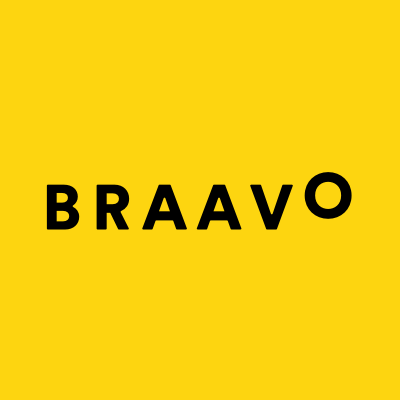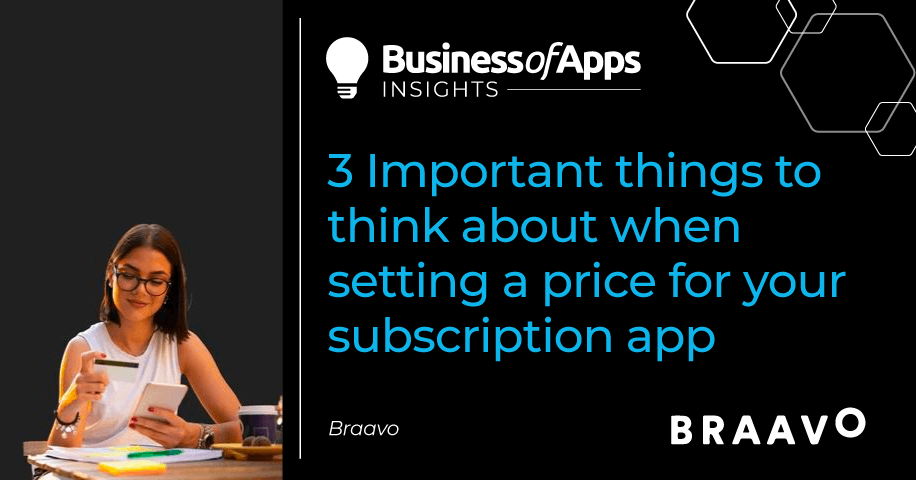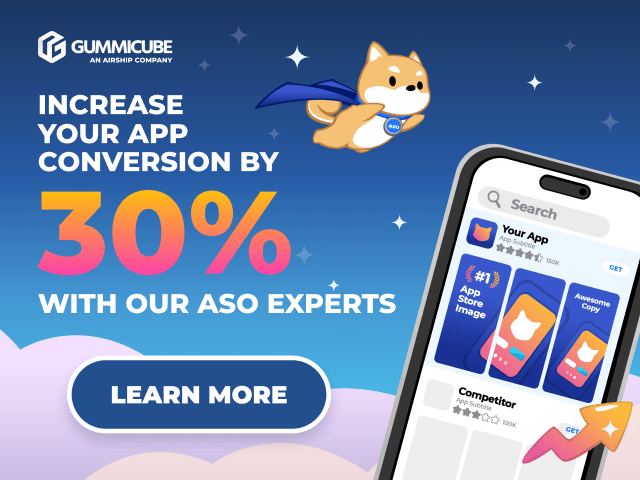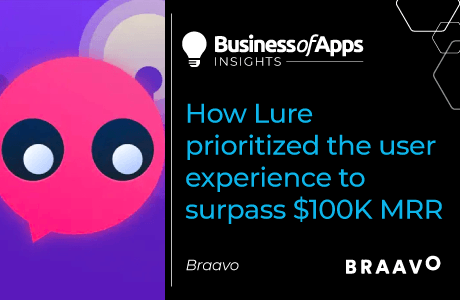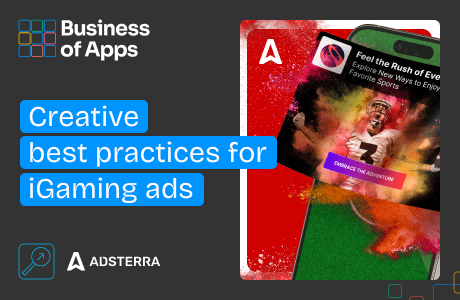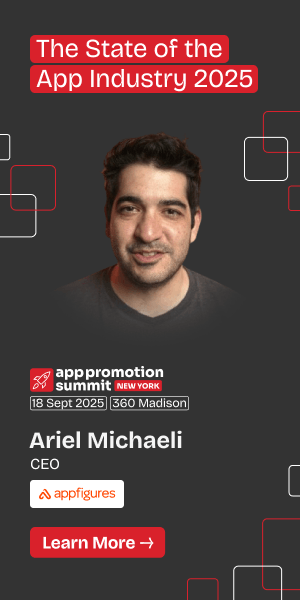If you’ve paid attention to the multi-year legal battle between Epic Games and Apple, along with a growing number of app developers going up against Apple and its App Store rules, then you know that developers are starting to put their foot down on some of the unfair experiences they face when it comes to making money from their apps. What’s common among these complaints is that Apple has established rules that make it pretty much impossible for developers to avoid paying a hefty commission to the App Store for being the middle-man between every app and its users. Previously, that commission was a whopping 30% of the sale price for all App Store developers, until it graciously introduced its small business program that brought down that commission to 15% on a company’s first $1 million US.
This post was first published on getbraavo.com.
Nevertheless, the App Store’s commission is still a significant chunk of revenue for any app developer. So along with your margins already sliced by 15-30%, there are quite a few factors that should be taken into consideration for how you price and launch your subscription products on the App Store and Google Play. With several years of experience launching multiple subscription apps and trying a bunch of different pricing and monetization strategies, I’m going to highlight a few of the more important things you should be considering when it comes to setting a price for your app.
Competition
Between both Apple and Google’s app stores, there are over 5 million apps to choose from. That’s a significant amount of potential competition, but that shouldn’t deter you from building your dream app business — from that multi-million figure, apps are organized into dozens of specific categories, making it a bit less daunting to fit into a niche where your users happen to be. Conducting a competitive analysis and app store audit to get a snapshot of the competitive landscape is something you should be doing anyway, but it’s an equally important exercise when thinking about pricing your subscriptions. If there are a handful of apps that do what you do, will users be willing to pay more for yours, or will they churn and check out the cheaper option one scroll away?
That’s where the freemium model can play an important role: some of the most successful subscription-based apps are often free with limited access to features upfront, and users need to subscribe if they want the full experience. With so much competition out there, a freemium app allows developers to show users an experience that gets them excited and even stands out against competitors who may be more expensive, or those that are cheaper and of lower quality. Additionally, a freemium model can help you learn from the users that actually make it through the top of the funnel, rather than lose them because they’re not interested in paying up front. For example, you can test your conversion rates with a free trial, where users subscribe for free and the trial automatically converts at the end of the trial period (if the user hasn’t canceled). Experiments like this can help you gain a deeper understanding of what’s really driving users to convert, what exactly is the value your app provides that users are willing to pay for, how much they may be willing to pay, or even help you recognize what’s causing them to churn seconds after they’ve arrived.
Perceived value and features
This brings to me to the next important consideration in your pricing exploration. If your business goes the freemium route, there will need to be a delicate (and well-researched) balance between what’s given to the user for free and what the user might be willing to subscribe for. For example, the popular meditation app Calm lets users explore a small handful of meditations and sleep stories compared to the hundreds of content options available with a subscription, in addition to sleep stories and specialty content from uber celebrities like Harry Styles and Matthew McConaughey. This additional value that Calm’s subscription offers may be just enough to convert a user into a subscriber, and using celebrity content may also help justify the higher price point compared to other meditation apps on the market.
This is not a recommendation to go find celebrities to endorse your app business — it’s just to give you some context around why some apps may be priced differently than others, and where yours might fit into that mix. For example, a venture-backed app company may be able to offer a lower price as they try to ramp up subscribers, or a much smaller company could offer an even lower price because their operational costs allow it. And, similar to Calm’s example above, a company producing an exclusive experience is likely going to be priced accordingly.
What’s most important is that the additional value your subscription offers should satisfy an unmet need for your audience — if it doesn’t do that job well, your users may be perfectly happy using the free product and see no need to subscribe or, worse, switch to a competitor.
Customer acquisition costs and lifetime value
How much does it cost you to acquire a new user? How much more does it cost to convert that user into a subscriber? And, once they subscribe, how much will they pay before they churn? These are all questions you’ll want to explore the answers to as you determine the price for your app. Some experts say that a user’s Lifetime Value (LTV) should exceed your customer acquisition cost (CAC), by as much as 3X. That means, if it costs you $10 to acquire a subscriber, their LTV should be at least $30; so if your monthly subscription is $6, they would need to remain subscribed for at least 5 months.
LTV can be directly affected by price in so many ways. For example, if you’re offering a monthly subscription and the price is too high, users may churn much sooner than they would if the price was lower. Similarly, a monthly subscription may deter users from choosing a higher price point (like an annual subscription) with a potentially higher LTV, which then requires the user to stay subscribed much longer. That’s one reason for discounts you might notice on annual subscriptions — where users are told they can “save” 30-50% by purchasing the 12-month subscription up front — and this may be to encourage users to choose the higher price.
Neither strategy is necessarily better than the other; what’s important to consider is what’s best for your business, and also what your users are willing to pay. Does your business need more cash up front? A higher annual price point may provide that, whereas growing a retained monthly subscriber base could take more time. But can your users afford an annual subscription at a higher price? Conducting user research and market exploration would be a good way to find out and strategize your pricing accordingly.
Final thoughts
These are just a few key considerations to think about when developing a pricing strategy for your app. Other important considerations not mentioned here include the type of subscription (eg. freemium vs. in-app purchases vs. pay upfront, etc.), currency and localization, introductory offers and promotions, and even taking a page from Spotify’s playbook and monetizing your subscriptions off the App Store altogether. Whatever your pricing strategy or the stage of your business, what’s important is that you establish a price that considers the competitive landscape, that your product provides value that meets a user need, that you choose a pricing model that makes sense for your business, and that it’s affordable for your audience.

